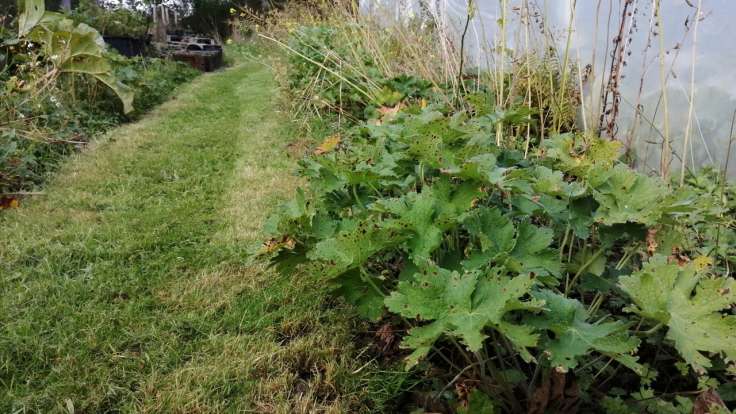
Geranium macrrorhizum makes a good ‘boundary’ plant for a grass path
Paths in the forest garden are useful in so many different ways. They go places. They define places. They keep plants in places.
Like all good permaculture features, paths have stacking functions, multiple uses that can be combined. Paths provide access, boundary definition and plant control.
Access in a forest garden is so important. You need to see what is doing well, what might need holding back, what might need a helping hand, or indeed, what might need replacing altogether. You need to harvest and to manage.
The forest garden is a dynamic system, constantly changing across time and with the seasons, and you need to see those changes to be able to respond to them.
A good tip is to vary the width of the paths. The main paths in my garden are grass and a metre wide, which makes for easy mowing, whereas I have smaller paths made of either wood chip or a clearing through the ground cover to the crop.
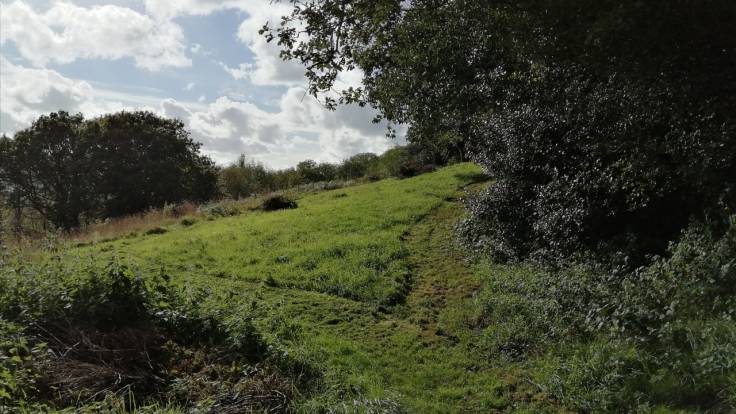
A perimeter path keeps the bramble from tip-layering into the garden
Living in West Wales, a key feature I have come to rely on is the perimeter path. This is simply a mown path around the edge of the property which is invaluable in keeping the tip-layering Bramble (Rubus fruticosus) from spreading into the garden.
For larger properties, a grass path is a good choice, as it’s resilient, hardwearing and responds well to mowing. The downside is that it does need regular maintenance every few weeks in the form of mowing, plus it can dominate neighbouring plants and grow unwanted into unestablished areas, the dreaded “grass creep”.
Well established plants will keep out grass and I have taken to planting robust “boundary plants”, such as Geranium macrorrhizum in beds to keep grass at bay. It is important to keep on top of weeding in the first year or so when a bed gets established.
Grass’s superpower can also be used to an advantage. I have a triangular area with a Horse Mint (Mentha longifolia) ground cover that is kept in check by mown grass paths.
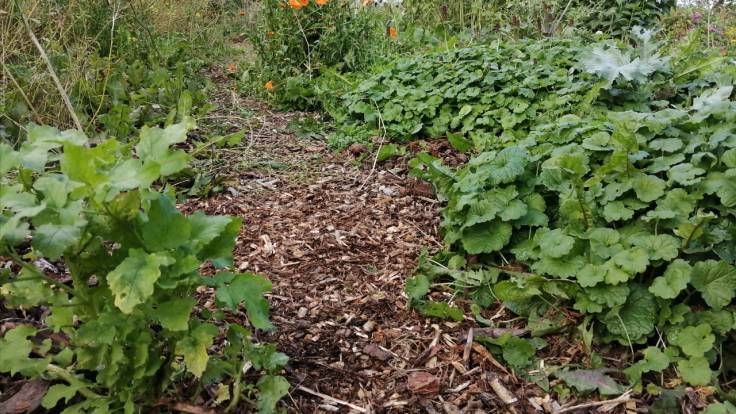
A wood chip path is good for high traffic though requires hoeing & topping up
In more delicate areas, for example where I’m growing alliums, I prefer to use wood chip paths rather than rampant grass paths. Wood chip will slowly compost down and requires topping up every year or so but if you use a hoe, you can keep it relatively clear relatively easy.
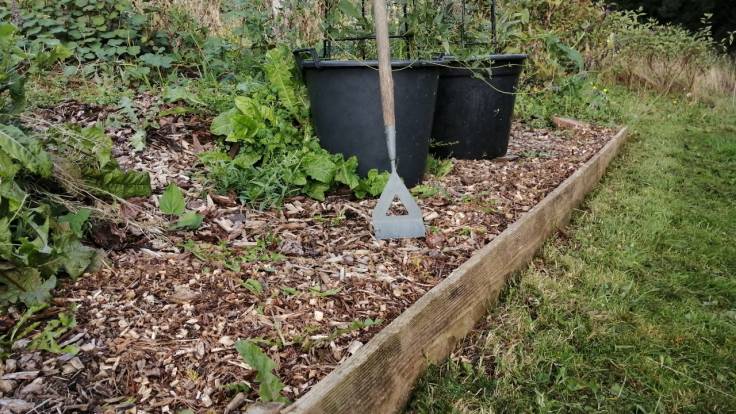
Grass will creep into a wood chip path unless there’s a barrier
However, grass will creep into wood chip, so you need some sort of barrier—I used an old bit of staked 6"x1" plank.
For very high traffic areas, I have been experimenting with a hoggin path, a compacted surface made from a mixture of clay, gravel and sand. It’s a more environmentally friendly alternative to concrete and block paving paths.
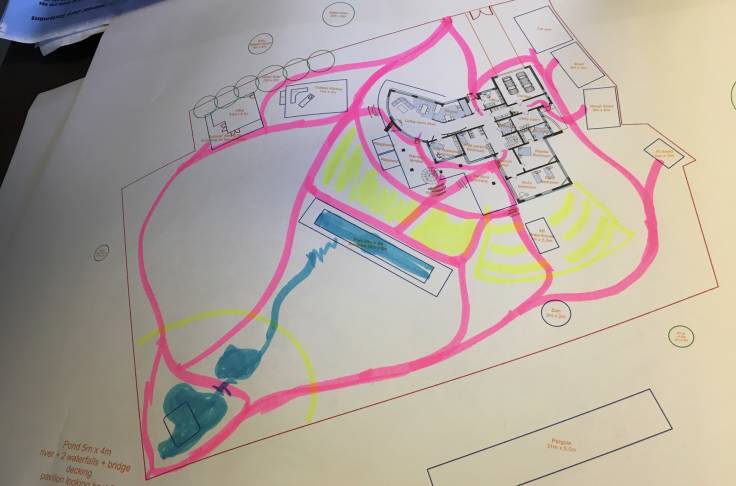
Paths are also used to define areas, in the design process & beyond
Whenever I’m designing a forest garden, I use paths to define the boundary of different areas. I really recommend breaking the garden down into more manageable chunks, so that you have a measure of your progress whilst creating the garden. It also makes it easier for regular maintenance and harvesting as well.
Whether you’re retrofitting your forest garden or starting from scratch, do carefully consider paths to access your crops, to keep your plants in check, and as a perimeter ringfence. Also spend time considering which materials to use and where.